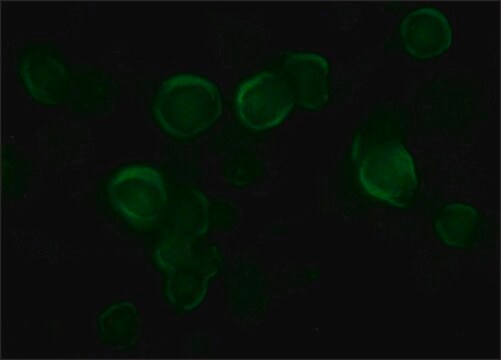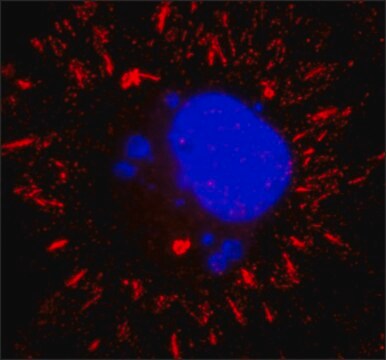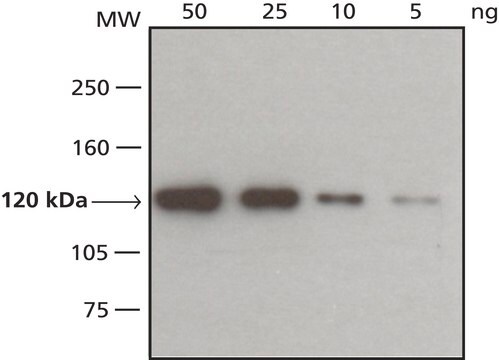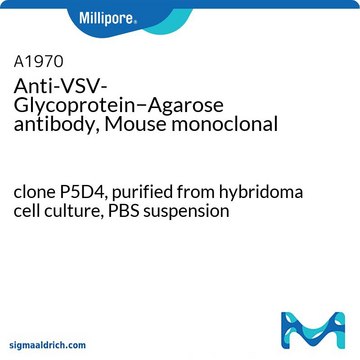V5507
Monoclonal Anti-VSV Glycoprotein antibody produced in mouse
clone P5D4, ascites fluid
Synonyme(s) :
Monoclonal Anti-VSV Glycoprotein
About This Item
Produits recommandés
Source biologique
mouse
Conjugué
unconjugated
Forme d'anticorps
ascites fluid
Type de produit anticorps
primary antibodies
Clone
P5D4, monoclonal
Contient
15 mM sodium azide
Technique(s)
immunocytochemistry: suitable
immunoprecipitation (IP): suitable
western blot: 1:100,000 using whole cell extracts expressing VSV-G tagged fusion protein
Isotype
IgG1
Conditions d'expédition
dry ice
Température de stockage
−20°C
Modification post-traductionnelle de la cible
unmodified
Vous recherchez des produits similaires ? Visite Guide de comparaison des produits
Spécificité
Immunogène
Application
Flow cytometry/Cell sorting (1 paper)
Stockage et stabilité
Clause de non-responsabilité
Vous ne trouvez pas le bon produit ?
Essayez notre Outil de sélection de produits.
Code de la classe de stockage
10 - Combustible liquids
Classe de danger pour l'eau (WGK)
nwg
Point d'éclair (°F)
Not applicable
Point d'éclair (°C)
Not applicable
Faites votre choix parmi les versions les plus récentes :
Déjà en possession de ce produit ?
Retrouvez la documentation relative aux produits que vous avez récemment achetés dans la Bibliothèque de documents.
Notre équipe de scientifiques dispose d'une expérience dans tous les secteurs de la recherche, notamment en sciences de la vie, science des matériaux, synthèse chimique, chromatographie, analyse et dans de nombreux autres domaines..
Contacter notre Service technique








